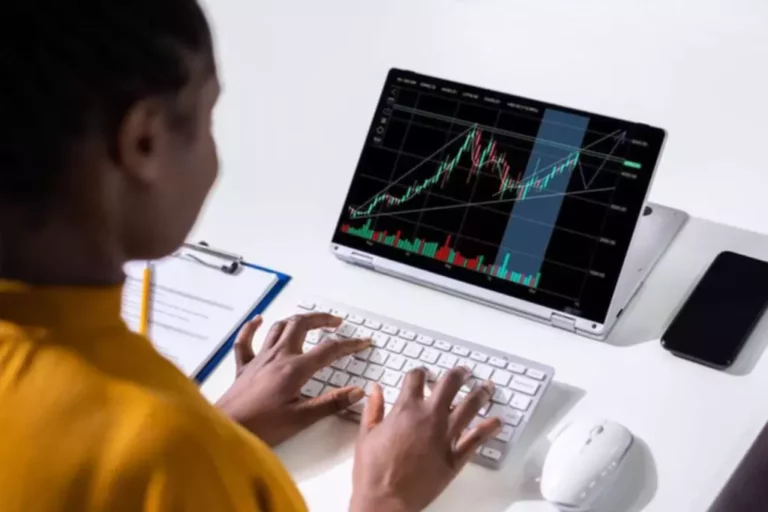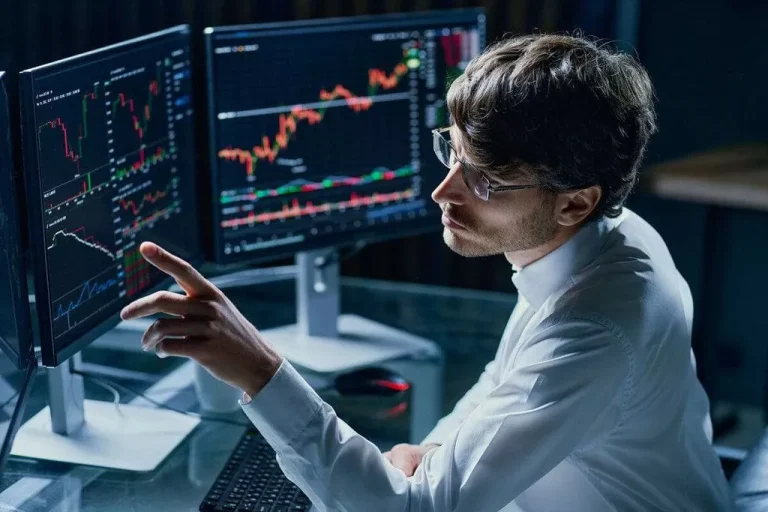Algorithmic trading- expert examples and strategies
Content
Success in day trading hinges significantly on choosing the right market, where factors like liquidity and volatility play pivotal roles. There are several types of trading, including day trading (buying and selling within the same day), swing trading (holding for days or weeks), and position trading (long-term holding). Each style demands different skills and strategies, with varying degrees of risk and potential reward. A passionate investor and seasoned blog writer with a keen interest in financial markets and wealth management.My goal is to empower individuals to make informed investment decisions through informative and engaging content. The platform sticks out for its hundreds of customizable apps allowing advanced traders with coding experience to create their own trading programs. If that weren’t enough, TradeStation offers spot algo trading competitive commissions and access to a vast library of educational materials and research.
Statistical Arbitrage Algorithms
If not kept in check, this leads to traders shelving otherwise profitable strategies or manually changing trades. If this shows promise you then need to create an actual trading system that involves entry and exit rules and applies https://www.xcritical.com/ sound risk management. You can also use these APIs to execute trades from an algorithm running on your computer or a virtual private server (VPS).
Can You Make Money with Algorithmic Trading?
Some high-frequency trading platforms do not provide complete transparency. Without the ability to monitor the system, traders may be unable to estimate the different outcomes of applying the trading solution. As a result, there may be a significant discrepancy between what you expect and what you receive. A trading algorithm can solve the problem by buying shares and instantly checking if the purchase has had any impact on the market price. It can significantly reduce both the number of transactions needed to complete the trade and also the Cryptocurrency exchange time taken to complete the trade.
- Algo trading requires access to liquid and fast-moving markets, the technical skills to code well-performing algorithms, and a platform that makes it possible to run automated trades.
- To start algorithmic trading, you need to learn programming (C++, Java, and Python are commonly used), understand financial markets, and create or choose a trading strategy.
- There are numerous trading strategies available, ranging from simple to complex.
- Automated stock trading can carry out multiple transactions simultaneously, often at a high frequency, leading to substantial profit generation compared to human trading.
- With the explosion of machine learning, natural language processing, and alternative data sources, algorithms can now incorporate information that goes beyond just price and volume.
What Programming Language Do Algorithmic Traders Use?
The algorithm buys a security (e.g., stocks) if its current market price is below its average market price over some period and sells a security if its market price is more than its average market price over some period. Algorithmic trading strategies simultaneously buy and sell assets in the same market (inter-market) or in different markets (intra-market) to profit from the price differences. This strategy requires quick execution and advanced algorithms to identify and exploit arbitrage opportunities. Several types of trading algorithms help investors decide whether to buy or sell. For example, a mean reversion algorithm examines short-term prices over the long-term average price, and if a stock goes much higher than the average, a trader may sell it for a quick profit. Algorithmic trading algorithms analyze vast amounts of market data, including price movements, volumes, and order book dynamics, to identify profitable trading opportunities.
Algorithm trading has the advantages of removing the human element from trading, but it also comes with its disadvantages. Algorithmic trading is subject to regulatory oversight and compliance requirements, which can vary across jurisdictions and impose additional costs and constraints on traders. Algorithmic trading removes human emotions from the trading process, leading to more disciplined and systematic decision-making. Algorithms place buy and sell orders simultaneously, profiting from the spread between bid and ask prices. By carefully managing these costs and understanding the fee structures of your trading activities, you can effectively minimize expenses, thereby maximizing the potential for profit in your trading endeavors. The selection of the right trading account is a critical step in your trading journey.
When you’re risking real money it’s easy to become emotional after a few losses which can cause you to overthink the quality of your strategy. While it’s tempting to skip this step once you’ve found a profitable strategy, it could save you thousands of dollars if you decide to live trade an algo with undiscovered bugs. The programming language offers thousands of built-in keywords and functions that are useful to traders, making strategy generation incredibly efficient.
Successful implementation of high-frequency trading strategies necessitates a well-equipped infrastructure capable of supporting the speed, data storage, networking, and complexity of the algorithm. Algo trading provides a systematic and rule-based approach to active trading, distinguishing itself from intuition or instinct-based methods. It’s an invaluable tool for investors seeking precision and speed in their trading strategies. VWAP strategy breaks down large orders into smaller chunks based on historical volume profiles. Its objective is to execute orders as close as possible to the volume-weighted average price (VWAP). The potential for overtrading is also reduced with computer trading—or under-trading, where traders may get discouraged quickly if a certain strategy doesn’t yield results right away.

Understanding different trading theories, analysis tools, and market indicators and how to refine your trading strategies and make more informed decisions are fundamental skills that serious traders need to have. Algorithmic trading is a powerful tool that leverages technology and data analysis to automate trading activities. By understanding the basics and learning how to take advantage of its benefits, traders like you can potentially enhance their trading strategies and improve their overall performance. Systematic traders, such as trend followers, hedge funds, and pairs traders, discover enhanced efficiency in algo trading. Both of these examples illustrate how algorithmic trading leverages technology and mathematical models to execute trades efficiently and capitalize on market opportunities. Human-created codes guide systems to make context-based decisions, efficiently evaluating market conditions.
These components enable traders to process market data efficiently, execute trades swiftly, and manage risks effectively. In conclusion, algorithmic trading represents a transformative force in financial markets, offering unparalleled speed, efficiency, and scalability in executing trading strategies. The most common algorithmic trading strategies follow trends in moving averages, channel breakouts, price level movements, and related technical indicators. These are the easiest and simplest strategies to implement through algorithmic trading because these strategies do not involve making any predictions or price forecasts.
He built one of the most successful hedge funds of the past decade, Renaissance Technologies, by specializing in algo trading based on math models. Time-weighted average price strategy breaks up a large order and releases dynamically determined smaller chunks of the order to the market using evenly divided time slots between a start and end time. The aim is to execute the order close to the average price between the start and end times, thereby minimizing market impact.

Traders and investors often get swayed by sentiment and emotion and disregard their trading strategies. For example, in the lead-up to the 2008 Global Financial Crisis, financial markets showed signs that a crisis was on the horizon. However, a lot of investors ignored the signs because they were caught up in the “bull market frenzy” of the mid-2000s and didn’t think that a crisis was possible. Algorithms solve the problem by ensuring that all trades adhere to a predetermined set of rules.
Algorithmic trading strategies can be as simple as this example, or they can be much more complex. Algorithmic trading has become more popular with the use of automated trading systems that, for the first time ever, allow you to set parameters and have computer programs automatically execute coded trades. Algorithmic trading can be used in any market, from stock trading to foreign exchange, making it a worthwhile tool for any professional trader. A hallmark of black box algorithms, especially those employing artificial intelligence and machine learning, is another issue, namely that the decision-making processes of these systems are opaque, even to their designers.
One of the most prevalent trading strategies, the trend following strategy, relies on analyzing trends, including moving averages, breakouts, and price level movements. Unlike strategies requiring price predictions, this approach is relatively straightforward to implement. Common trend algo indicators, such as the 30-day, 50-day, and 200-day moving averages, are frequently employed.
The basic idea is to break down a large order into small orders and place them in the market over time. The choice of algorithm depends on various factors, with the most important being volatility and liquidity of the stock. Arbitrage is not simply the act of buying a product in one market and selling it in another for a higher price at some later time. The long and short transactions should ideally occur simultaneously to minimize the exposure to market risk, or the risk that prices may change on one market before both transactions are complete. Traders may, for example, find that the price of wheat is lower in agricultural regions than in cities, purchase the good, and transport it to another region to sell at a higher price. This type of price arbitrage is the most common, but this simple example ignores the cost of transport, storage, risk, and other factors.
Because algorithms operate as market makers, their constant activity provides an ever-available stream of buy and sell orders for all other players, further increasing liquidity. The other main disadvantage of algorithmic trading strategies is their inability to adapt to new market trends. The only trades your algo strategy will execute are those you program into it.

Join The Discussion